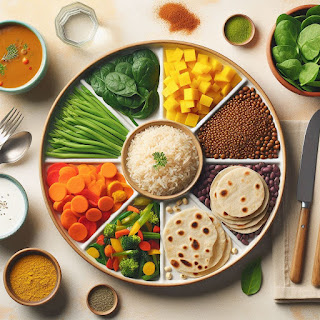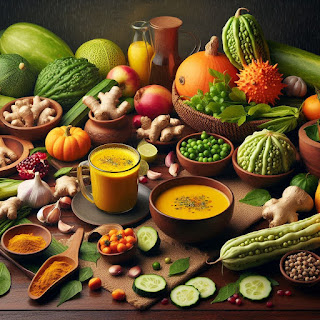Start the Year Right
Building a Healthy Eating Routine in 2025
As the clock strikes midnight and a new year begins, it’s the perfect time to embrace healthy habits that nourish your body and mind. Starting the year with a focus on balanced eating can set the tone for a healthier, more energetic 2025. Here’s a step-by-step guide to building a sustainable and enjoyable healthy eating routine.
1. Set Realistic Goals
The key to lasting change is setting achievable goals. Instead of vowing to overhaul your diet overnight, start small. Here are some examples:
- Goal 1: Add one extra serving of vegetables to your meals each day.
- Goal 2: Swap sugary beverages for water or herbal teas.
- Goal 3: Cook at home at least three times a week.
Pro Tip: Write down your goals and track your progress to stay motivated.
2. Plan Your Meals
Meal planning is your secret weapon for maintaining a healthy diet. A well-thought-out plan helps you avoid last-minute unhealthy choices.
Tips for Effective Meal Planning:
- Include all food groups: Balance your meals with proteins, whole grains, healthy fats, and plenty of fruits and vegetables.
- Batch cook: Prepare staples like soups, stews, and curries in advance.
- South Indian Ideas: Try millet-based idlis, vegetable-loaded sambars, or curd rice with a side of beetroot poriyal.
3. Make Breakfast a Priority
A nutritious breakfast jumpstarts your metabolism and keeps you energized.
Quick & Healthy Breakfast Ideas:
- Vegetable upma made with broken wheat.
- Idlis served with coconut chutney and mint-packed sambars.
Remember: A balanced breakfast should include complex carbs, protein, and healthy fats.
4. Snack Smart
Mindless snacking can derail your healthy eating routine. Swap packaged snacks with wholesome alternatives:
- Roasted makhana or chickpeas.
- Seasonal fruits like guava, papaya, or oranges.
- Nuts and seeds in controlled portions.
Tip: Keep healthy snacks accessible to avoid temptation.
5. Hydrate, Hydrate, Hydrate
Dehydration can mimic hunger and lead to overeating. Make water your go-to drink:
- Aim for 8–10 glasses of water daily.
- Flavor water with lemon slices, mint, or cucumber for variety.
- Limit caffeinated and sugary beverages.
6. Practice Mindful Eating
Eating mindfully can transform your relationship with food. Slow down, savor every bite, and listen to your body’s hunger and fullness cues.
Steps to Practice Mindful Eating:
- Eat without distractions like TV or smartphones.
- Use smaller plates to control portion sizes.
- Chew thoroughly to aid digestion and enjoy flavors fully.
7. Embrace Seasonal and Local Foods
Eating in harmony with the seasons supports health and sustainability. In January, indulge in:
- Vegetables: Carrots, radishes, and winter greens like spinach and amaranth.
- Fruits: Guavas, custard apples, and citrus fruits.
- Legumes: Incorporate protein-rich horse gram and moong dal into your diet.
8. Cook More Often
Home-cooked meals give you control over ingredients and portion sizes. Explore healthy cooking techniques like steaming, grilling, and baking.
Recipe Inspiration:
- Dish: Ragi dosa with coriander chutney.
- Soup: Tomato and lentil soup with a dash of black pepper.
- Snack: Steamed sweet potato slices sprinkled with chaat masala.
9. Stay Consistent
Consistency is the foundation of any routine. Even if you slip up occasionally, don’t let it derail your progress. Focus on making better choices at your next meal.
10. Seek Support and Celebrate Wins
Share your journey with friends or family. Join communities or follow health-focused accounts for inspiration. Celebrate small victories—every healthy choice is a step toward your goal.
Kickstart 2025 with Confidence
Building a healthy eating routine doesn’t have to be complicated. With small, consistent changes, you can make 2025 your healthiest year yet. Remember, the journey is as important as the destination. Here’s to a year of good health, great food, and positive vibes!
What’s your first healthy step in 2025? Share in the comments below!




































